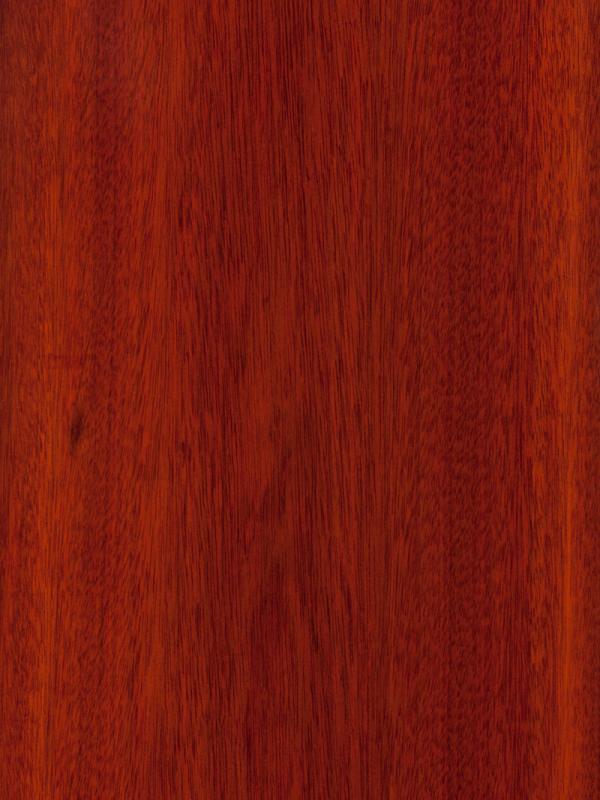
Family: Moraceae, the mulberry family.
Origin: Brazil, Venezuela, Peru and Panama, French Guiana, Colombia, Guyana and Suriname.
Other common names: Satine, Muirapiranga, Bois satine, Satine urbane, Cardinalwood, Brazilwood, Brazil rosewood, Satinee, Satine rouge, Conduru, Satinjout, Legno satino, Palo de oro, Siton paya.
The tree: Bloodwood usually grows in sandy ground in the upland rain forest. It is a tall tree, growing to heights of 120 ft. or more and has a straight, cylindrical bole that’s mostly clear for 75 ft. or more with an average diameter of 35 in. The smooth barked trunk has no buttresses and sometimes exudes a whitish latex. Its broad based leaves are elliptic in shape and the fruit resembles a fig and has a single large seed.
Appearance: The heartwood is variously colored featuring ribbon stripes of green, yellow, or red overlaid with a lustrous, golden sheen. The sapwood is a pale yellow and clearly demarcated. Color is usually deep red with ribbon figure in quarter-sawn. The texture ranges from rather fine to coarse. The wood is odorless and tasteless.
Density: Average specific gravity ranges from .71 to .82(ovendry weight/green volume), equal to an air-dried weight of 56 to 66 pcf. The sapwood is lighter and is variable in weight. Janka hardness is 2900 pounds of force.
Drying & shrinkage: Bloodwood air-dries fast and easily with little or no degrade unless it contains tension wood, in which case it will be prone to warp. Average reported shrinkage values (green to ovendry) are 4% radial, 6% tangential.
Working properties: Wood has high bending and crushing strength and medium stiffness and resistance to shock loads. It is recommended to use power tools for sanding and machining. Wood has moderate blunting effect. It glues well. Pre-boring is needed for nails and screws, and the wood holds screws well. Wood stains and polishes well. Possible adverse reactions from the dust includes nausea, excessive salivation and thirst.
Durability: The heartwood is highly resistant to insects and decay, while the sapwood is rather perishable.
Uses: Woodworkers appreciate the vibrant color of the heartwood, it is used for furniture, veneer, inlays, cabinetry, turnings, bows and fishing rods. The much wider sapwood, although lacking the beauty and luster of the heartwood, also finds expanded uses.
Availability: Bloodwood is rather scarce and only occasionally available commercially in the U.S. For this reason it is fairly expensive.